Why Is My Chicken Rubbery? And How Can I Fix It?
You’re not alone. Rubbery chicken is one of the most common kitchen frustrations. There is nothing worse than spending time, money, and energy on a recipe only to have the chicken be rubbery at the end. Whether you followed the recipe to a tee or just threw the chicken on the grill, it can still end up with a chewy, unpleasant texture.
Rubbery chicken is usually an indicator of overcooked chicken. The longer the chicken cooks, the more moisture it loses, and without moisture, the protein fibers become elastic, AKA rubbery. After testing dozens of chicken batches (and learning from past failures), I’ve narrowed it down to three main culprits. I’ll also be sharing foolproof ways to rescue and prevent it.
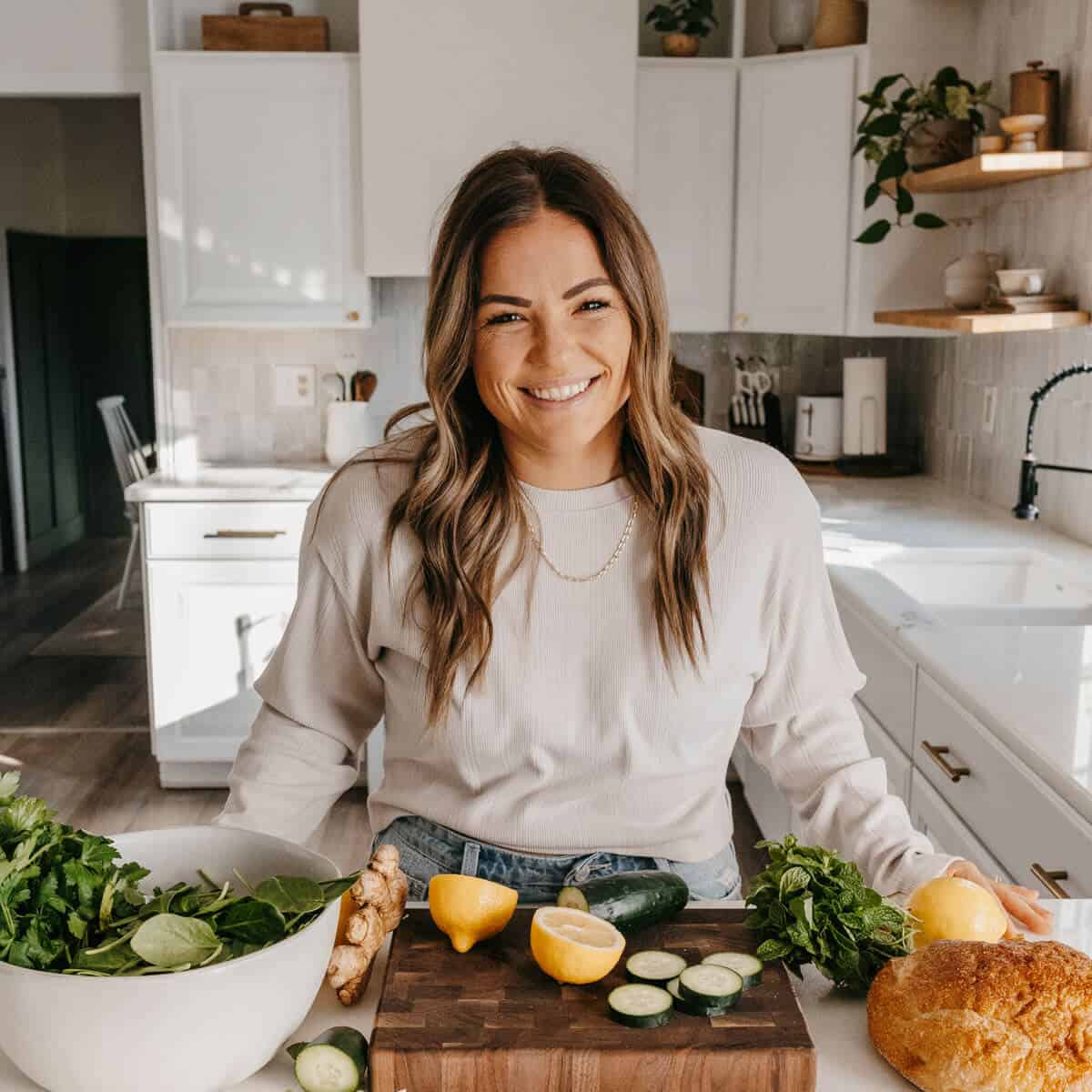
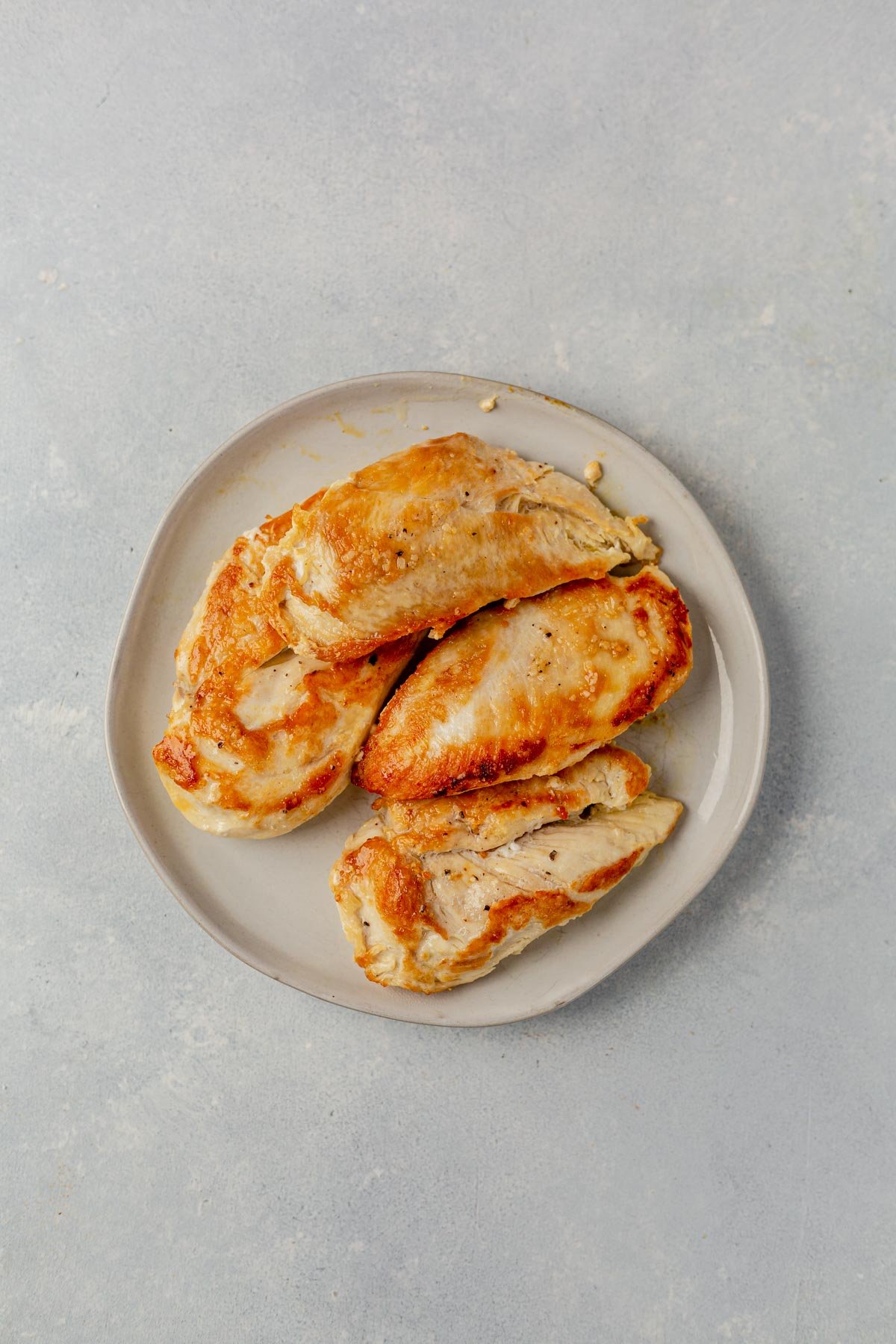
3 Reasons for Rubbery Chicken
Overcooked Chicken
As mentioned above, overcooked chicken is the most common reason for rubbery chicken because the chicken loses moisture as it cooks. Checking the internal temperature of the chicken is the best way to avoid this. Keep reading for a few tried and true strategies and cooking methods.
Undercooked Chicken
The opposite end of the spectrum can also cause rubbery chicken. Undercooked chicken usually has a shiny appearance and a jiggly consistency. This is unsafe to eat and should be fixed before eating.
Poor Quality Chicken
Slow-growing and organic chicken are ideal when it comes to quality. Woody chicken breasts and chicken with white striping are two types of chicken that are generally known to result in rubbery chicken regardless of the cooking process.
White striped chicken: this is a chicken breast that contains white stripes of fat along the muscle fibers. This can happen to chicken breasts, chicken thighs, and other tender pieces.
Woody breasts: woody breasts occur when the muscle fibers are knotted. The increased connective tissue and bulging muscle make them harder and chewier to eat.
A 2019 study found a significant correlation between woody breasts and the chicken’s body weight. As a result of the study, scientists believe the increased growth rate of chickens may be the cause of both white-striped and woody breasts.
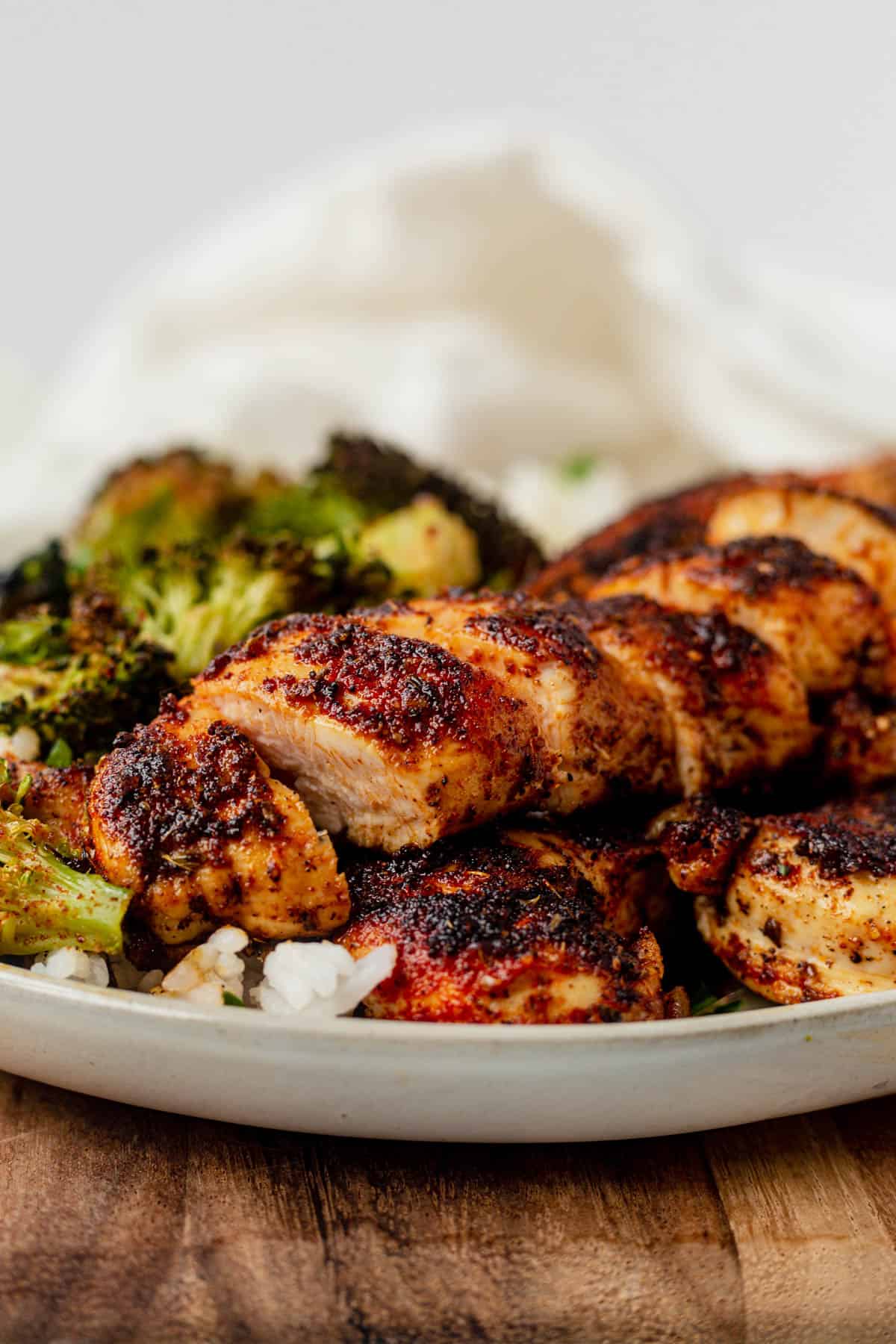
Can you Eat Rubbery Chicken?
It’s generally safe to eat woody breasts, white-striped breasts and overcooked chicken, however, it won’t be as pleasant of an eating experience. On the other hand, it is not safe to eat undercooked or raw chicken.
Rubbery chicken due to undercooking can result in food poisoning and is a health risk in addition to the unappetizing texture issue. Use a meat thermometer inserted in the thickest part of the chicken to ensure it’s cooked to a safe 165°F to avoid a health hazard.
How do You Fix Rubbery Chicken?
Protein, fat, and liquid are the three elements that make up chicken. As previously mentioned, the chicken loses moisture (and fat) as the cooking time increases, resulting in a rubbery texture.
You can’t go back and re-make the chicken, but the good news is there are ways to fix it. You’ll need to add more liquid and fat back to help the chicken become more tender and enjoyable.
- My favorite way to save and serve rubbery chicken is by shredding it and adding some sort of liquid and fat back in. Shredding the chicken breaks down the tough muscle fibers and additional liquid helps make it seem juicier. Shredded chicken is featured in several recipes including our favorite creamy chicken tortilla soup, BBQ chicken salads, chicken salad stuffed avocado, and healthy chicken enchiladas.
- You can also smother your chicken in a delicious sauce. Cover it in creamy jalapeno ranch or a homemade whole30 BBQ sauce. Maybe even homemade healthy honey mustard.
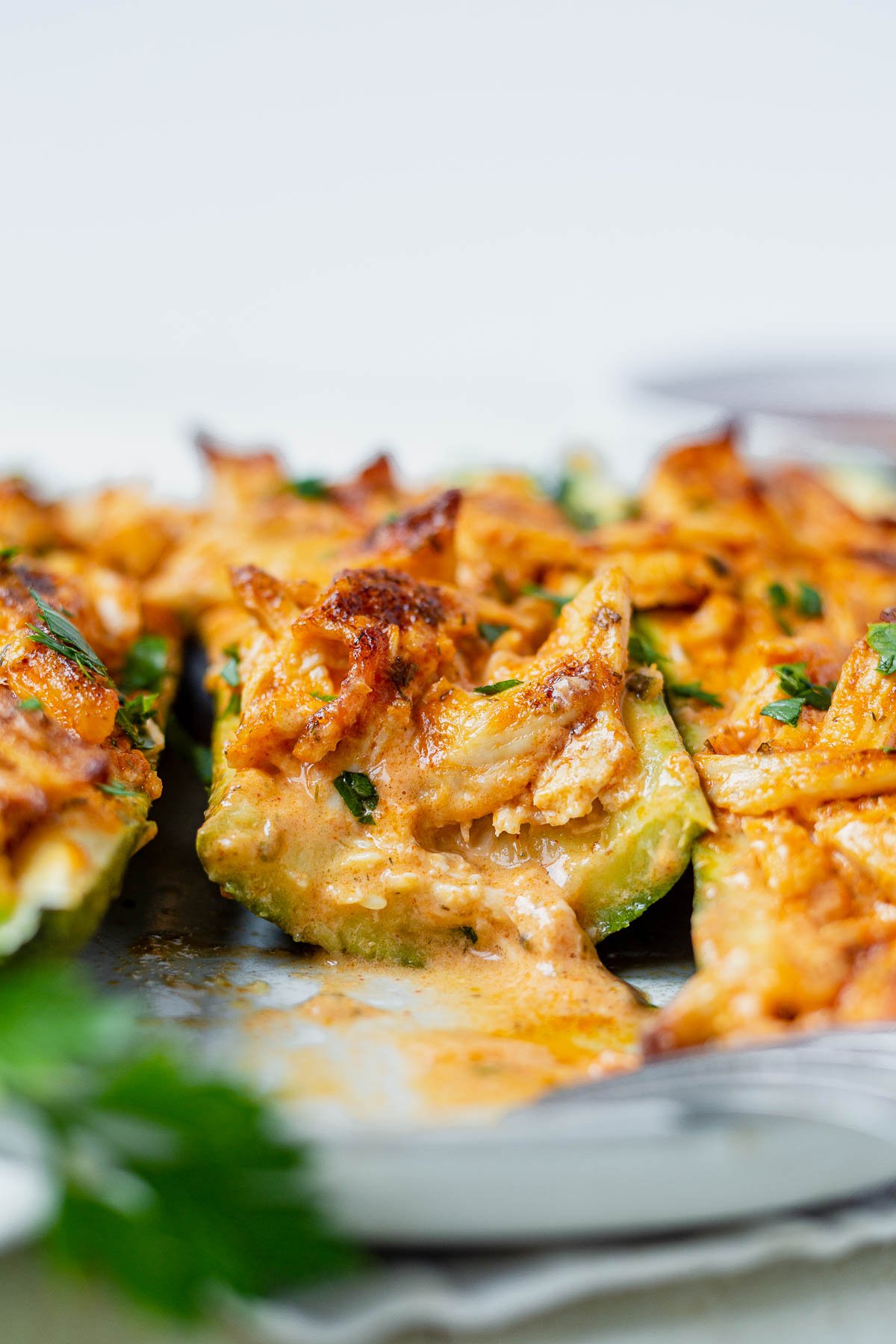
How to Prevent Rubbery Chicken
- Cook the chicken to the right temperature for the best results. Because overcooking is the main culprit for rubbery chicken, then not overcooking it is the logical solution.
- Buy high-quality chicken, especially chicken that isn’t super large. Our favorite online retailer is Cook’s Venture because of their commitment to slow-growing pasture-raised heirloom chicken. They sell every kind of chicken meat including whole chicken, chicken thighs, chicken wings and breasts, and their meat quality is top knotch. Try to buy organic in the store if it’s available and doable for you. If not, totally fine! Just look for smaller chicken breasts that don’t have any white stripes running through them.This rule goes for any type of chicken meat including
- Prep the chicken properly: use a meat tenderizer to flatten it out into an even piece or slice the chicken breast in half lengthwise if it’s really large. An even piece of chicken cooks more evenly so you aren’t left with overcooked, rubbery chicken in some spots because others aren’t finished cooking. Additionally, bring the chicken to room temperature before cooking, if possible. Adding cold chicken to a hot pan can result in uneven cooking.
- Use a cooking method that adds moisture including slow cooking, braising, stewing, steaming, and simmering, which can soften tough fibers in the chicken. Most of these methods cook the chicken at a lower temperature in a liquid for a tender, juicy result. Our crock pot chicken salsa is a perfect example.
- Marinate or brine the chicken if you opt for a dry heat cooking approach like grilling, pan searing or roasting. Our cilantro lime chicken thighs have a delicious marinade using olive oil, lime juice, cilantro, and honey.
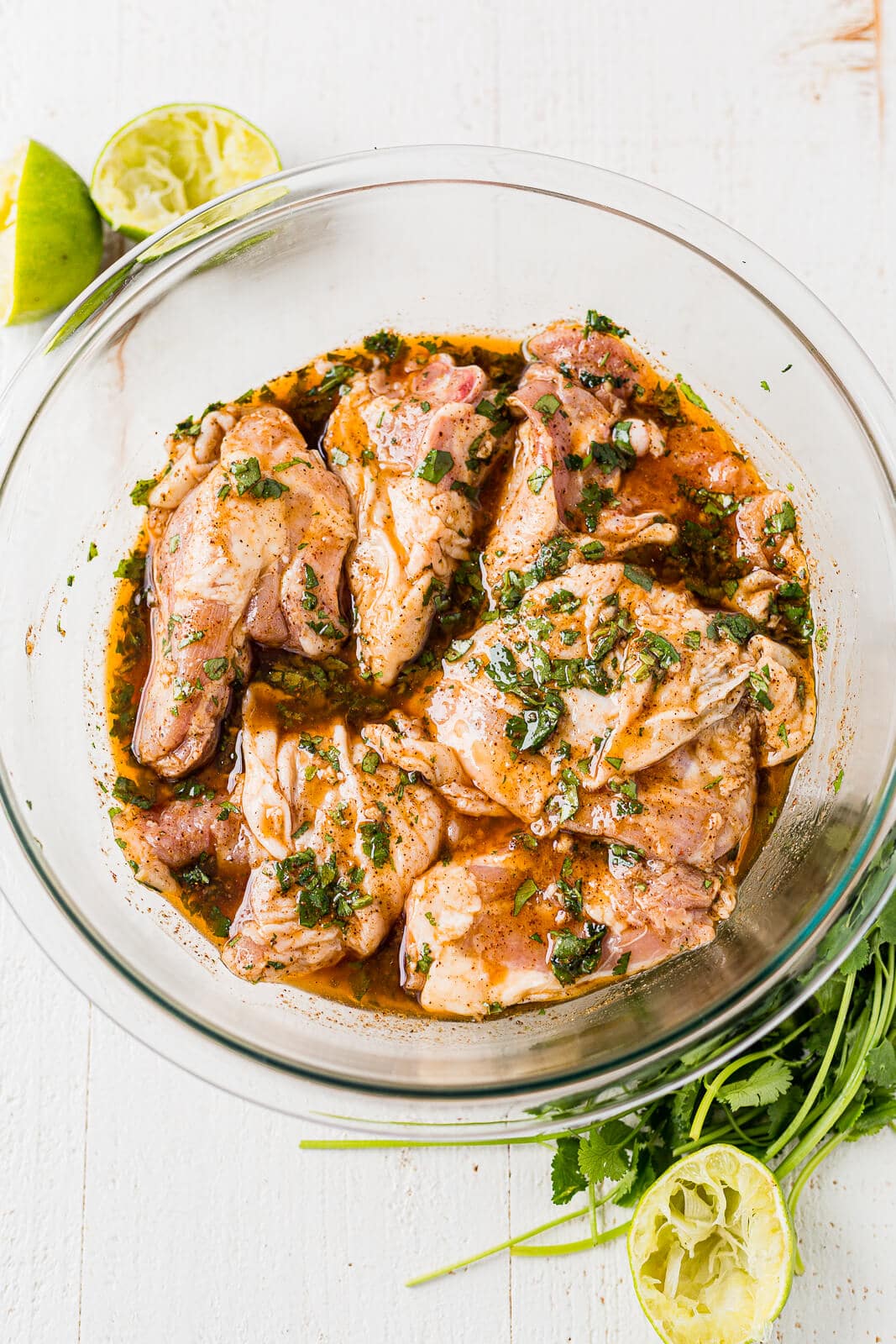
Reheating Chicken
Reheating perfectly cooked chicken can result in rubbery chicken the next day. That’s because it’s drying it out as it reheats. Whenever you’re reheating, use low temperatures and add more moisture if possible. Add a bit of chicken broth in the bottom of the bowl to keep it juicy. Never use high heat to reheat chicken because a high temperature will dry out the chicken even more.
Always Juicy Chicken Recipes
- Instant Pot Chicken Noodle Soup
- Creamy Chicken Tortilla Soup
- Crispy cilantro lime chicken
- Instant Pot Greek Chicken and Rice
- One Pot Hawaiian Chicken
- Slow cooker Mexican chicken casserole
- Slow cooker chicken tortilla soup
- Crock Pot white chicken chili
- Instant Pot chicken enchiladas
- Instant Pot chicken tinga
- Instant Pot Salsa Chicken
- Instant Pot Greek lemon chicken soup
This post may contain affiliate links. Read our disclosure policy.

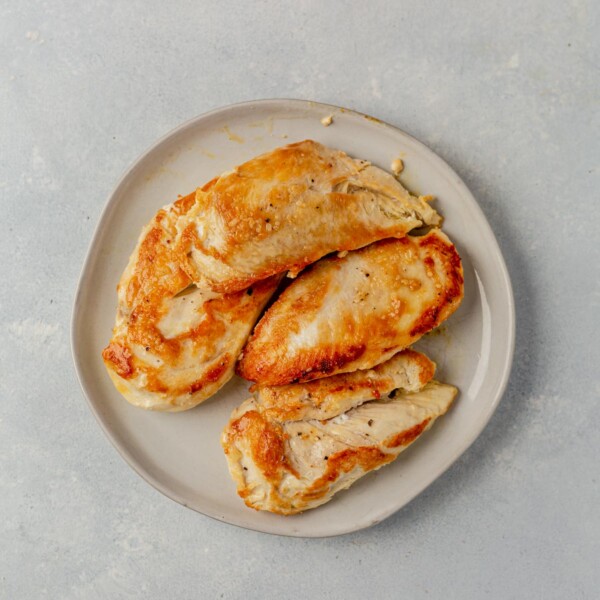










Thanks for the info
It’s from the Arsenic.